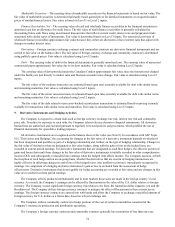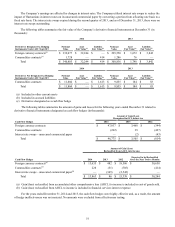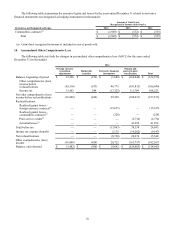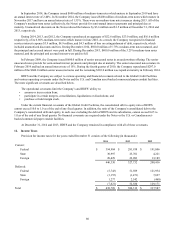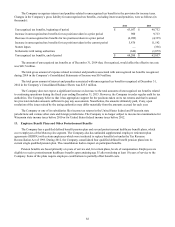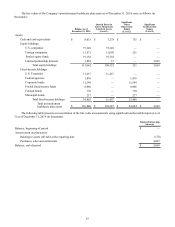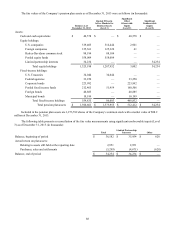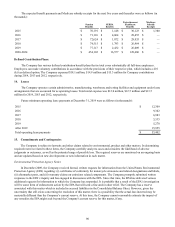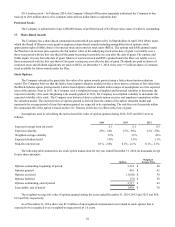Harley Davidson 2014 Annual Report Download - page 82
Download and view the complete annual report
Please find page 82 of the 2014 Harley Davidson annual report below. You can navigate through the pages in the report by either clicking on the pages listed below, or by using the keyword search tool below to find specific information within the annual report.
The Company recognizes interest and penalties related to unrecognized tax benefits in the provision for income taxes.
Changes in the Company’s gross liability for unrecognized tax benefits, excluding interest and penalties, were as follows (in
thousands):€
2014 2013
Unrecognized tax benefits, beginning of period $63,057 $48,752
Increase in unrecognized tax benefits for tax positions taken in a prior period 900 9,713
Decrease in unrecognized tax benefits for tax positions taken in a prior period (4,989)(4,335)
Increase in unrecognized tax benefits for tax positions taken in the current period 5,876 11,142
Statute lapses — (336)
Settlements with taxing authorities (644)(1,879)
Unrecognized tax benefits, end of period $64,200 $63,057
The amount of unrecognized tax benefits as of December€31, 2014 that, if recognized, would affect the effective tax rate
was $48.7 million.
The total gross amount of expense related to interest and penalties associated with unrecognized tax benefits recognized
during 2014 in the Company’s Consolidated Statements of Income was $0.9 million.
The total gross amount of interest and penalties associated with unrecognized tax benefits recognized at December€31,
2014 in the Company’s Consolidated Balance Sheets was $25.3 million.
The Company does not expect a significant increase or decrease to the total amounts of unrecognized tax benefits related
to continuing operations during the fiscal year ending December€31, 2015. However, the Company is under regular audit by tax
authorities. The Company believes that it has appropriate support for the positions taken on its tax returns and that its annual
tax provision includes amounts sufficient to pay any assessments. Nonetheless, the amounts ultimately paid, if any, upon
resolution of the issues raised by the taxing authorities may differ materially from the amounts accrued for each year.
The Company or one of its subsidiaries files income tax returns in the United States federal and Wisconsin state
jurisdictions and various other state and foreign jurisdictions. The Company is no longer subject to income tax examinations for
Wisconsin state income taxes before 2010 or for United States federal income taxes before 2012.
82
13.€€€€Employee Benefit Plans and Other Postretirement Benefits
The Company has a qualified defined benefit pension plan and several postretirement healthcare benefit plans, which
cover employees of the Motorcycles segment. The Company also has unfunded supplemental employee retirement plan
agreements (SERPA) with certain employees which were instituted to replace benefits lost under the Tax Revenue
Reconciliation Act of 1993. During 2012, the Company consolidated four qualified defined benefit pension plans into its
current single qualified pension plan. The consolidation had no impact on participant benefits.
Pension benefits are based primarily on years of service and, for certain plans, levels of compensation. Employees are
eligible to receive postretirement healthcare benefits upon attaining age 55 after rendering at least 10 years of service to the
Company. Some of the plans require employee contributions to partially offset benefit costs.




